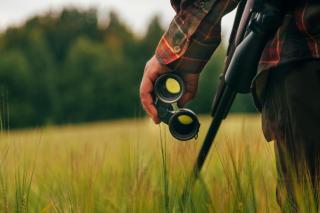Advertisement
I don’t hunt. My reticence is due to a lack of time and skill—not because acquiring food in this way is necessarily wrong, just as vegetable gardening isn’t necessarily virtuous. I have years of practice with using fewer resources to grow peas, carrots, and kale, but gardens can also produce by applying loads of oil-based fertilizers, doses of synthetic pesticides, and volumes of misapplied water. Likewise, I’ve seen that hunting can be done well—or badly, even horribly. And there’s the rub.
The Trump administration is moving to allow the use of baits to attract brown bears and the use of motorboats to shoot swimming caribou. The excuse involves aligning federal predator control guidelines and Alaskan state law. However, bears are opportunistic predators (at best) and reports of predatory caribou are hard to find. One has to suspect that the real reason has to do with making it easier to “harvest” meat.
So why do these methods of hunting bother me and many others? After all, if there is a limit on the number of animals taken, then how they end up dead isn’t going to matter ecologically. A brown bear ambushed from a few feet away while it’s gorging on a pile of donuts and bacon is just as dead as one that was tracked for days through the Alaskan wilds. My sense of the essential difference harkens back to the summer after fifth grade.
Hunters, or at least the ones I know and respect, understand that ‘fair chase’ is a matter of cultivating human virtue, of respecting the animal, of defining oneself.
I remember using a pair of tweezers to dip a wad of white bread into warm milk and then carefully lowering the morsel into a corner of a shoebox. Responding to a gentle nudge, a naked form lifted its oversized head, with bulging eyes still hidden by a gray film. Looking more like an embryo than a bird, the chick gobbled down the meal, shifted in the shredded newspaper, and went back to sleep. I could see the pink and purple organs through the translucent skin, heart and lungs keeping a frenetic pace.
My mother showed me how to set up a nest box on a heating pad and how to feed baby birds. And like the others I found beneath the cottonwoods in the backyard, this nestling would die before it fledged. I was an avian hospice worker. Every shoebox became a casket.
Various pets died in my care—turtles, mice, and gerbils—but the birds were different. Seeing a nestling in the grass invoked an obligation that had to be honored. To pass it by meant consigning the wild creature to depredation by a neighborhood cat. But in either place—shoebox or lawn—the nestling would not survive. At some level I knew that, but I also understood that my caring was not futile. Or at least it wasn’t meaningless.
Tending to the birds was tending to my own character, to a growing sense of identity, to an inchoate vision of the man I would aspire to be. Hunters, or at least the ones I know and respect, understand that “fair chase” is a matter of cultivating human virtue, of respecting the animal, of defining oneself.
Henry David Thoreau struggled to understand the role hunting and fishing played in fostering a good life. He wrote, “I have found repeatedly, of late years, that I cannot fish without falling a little in self-respect.” But at the same time, “every year I am less a fisherman, though without more humanity or even wisdom.”
On our first trip to the beaver ponds above Laramie, my son landed a brook trout. The fish had swallowed the hook, and Ethan knew we couldn’t return it to the water. “Hit it hard, once above the eye,” I told my son, handing him a rock that I’d used minutes earlier to dispatch a fish. After delivering a tentative blow, Ethan looked to me with the pathetic half grin of a kid struggling with a hard lesson. “That’s OK,” I said, gently taking the stone from him and striking the fish.
My daughter was a passionate gardening partner. And together we learned that it matters not only how much you harvest, but how you grow the plants and thereby cultivate your own character. As human animals, we face the existential dilemma: we must kill to live. At Walden Pond, Thoreau’s garden taught him ecological realities: “My enemies are worms, cool days, and most of all woodchucks.”
Upon glimpsing a bean-devouring woodchuck, Thoreau was tempted to seize and devour the creature—not out of horticultural vengeance or bodily hunger, but for the wildness that the groundhog represented: “I found in myself, and still find, an instinct toward a higher, or, as it is named, spiritual life, as do most men, and another toward a primitive rank and savage one, and I reverence them both. I love the wild not less than the good.”
Me too.
